Go grab a tomato and a small bowl of water. You and I are going to save tomato seeds. Because we are awesome and cheap. And now is the time to be both of those things.
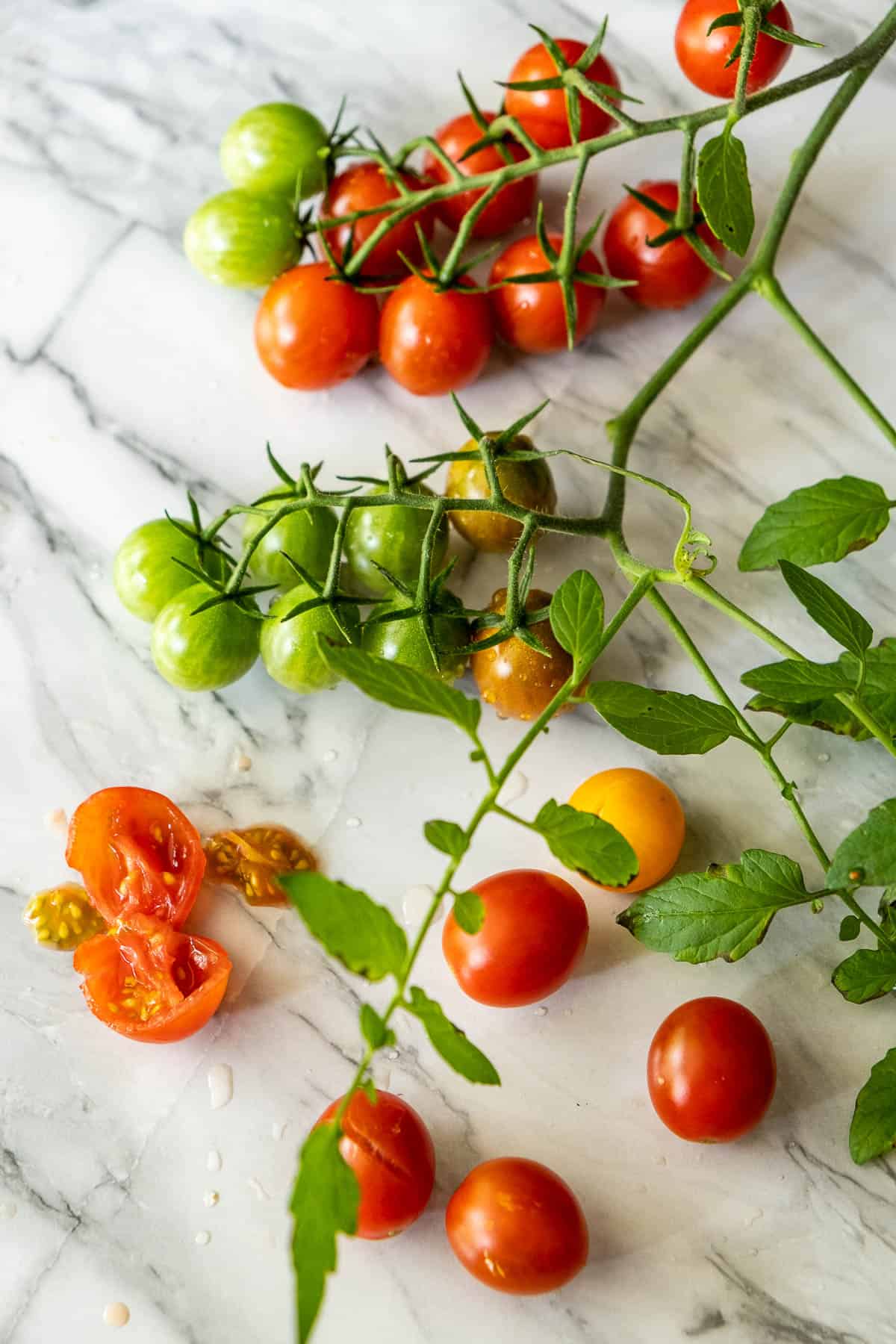
Saving money is only one of the reasons to save tomato seeds. The main reason to do it is so you can give them away. Ditto for saving lettuce, onion seeds or anything else.
Giving tomato seeds away makes you, the giver, feel good because it allows you to selflessly pass on a solid 4 months of hornworms, a bit of crying and blight to a fellow gardener.
Here are your instructions in a nutshell. You can read further on if you want to learn more.
Table of Contents
How to Save Tomato Seeds (5 Easy Steps)

- Squeeze seeds and pulp into a bowl, add about 1" of water, and cover loosely with a tea towel or cloth.
- Let ferment 2-3 days.
- Rinse in a sieve until clean.
- Spread to dry overnight.
- Store in a labeled paper envelope.
Pro Tip: Fruit flies love tomato seed goo-always keep the bowl covered, or you'll end up with fruit fly maggots that I assume you have no interest in saving.
I have been saving and reusing seeds from all of these tomato varieties and more for close to 2 decades.
Can you save tomato seeds from any tomato?
You can, but only the seeds from open pollinated (normally heirloom) varieties will produce a tomato exactly like its parent. Saving seeds from heirloom tomatoes is your best shot at success.
That doesn't mean you can't clean and dry tomato seeds from hybrid tomatoes like Early Girl, Better Boy or Sun Gold which are favourites among tomato growers. But it does means you won't get the same tomato next year. It could look and taste completely differently.
Ferment vs. No-ferment - which should you use?
Fermenting - In this process you fermenting your seeds in some water until the water gets gross. This process removes the gooey gel from around the seed and helps kill off any disease present. Takes 3 or 4 days of fermenting.
No Fermenting - Just pick out the seeds and let them dry on the counter. No disease resistance is built up and the seeds are dirtier, but it works.
| Ferment Method | No-Ferment Method |
|---|---|
| Removes gel coat, disease protection | Quickest, no waiting |
| 2–3 days in water until mold forms | Seeds dirtier, lower germination |
| Best for long-term seed saving | Fine if you just want “good enough” |
What You Need
- ripe heirloom tomato
- water
- bowl
- sieve
Saving Tomato Seeds
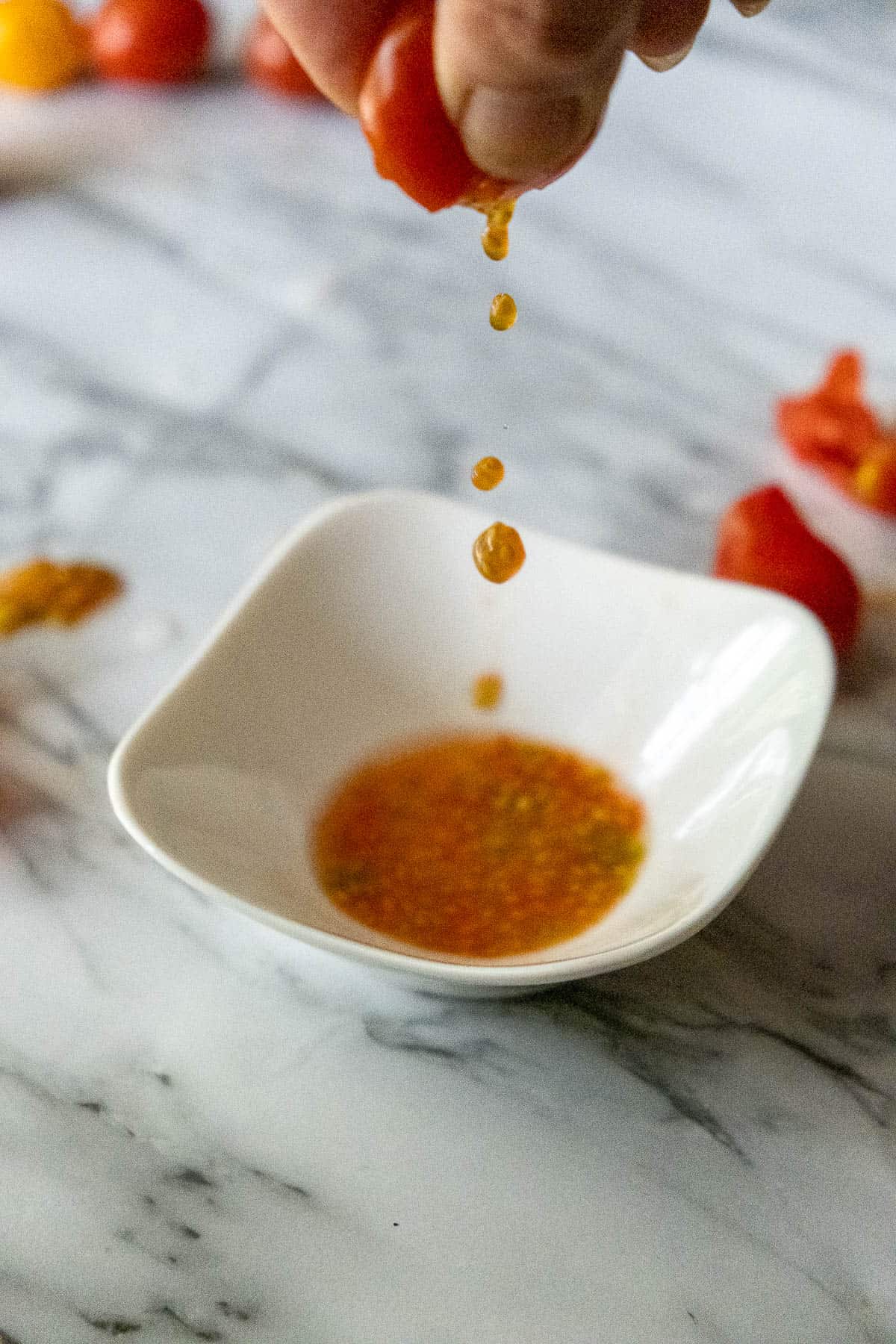
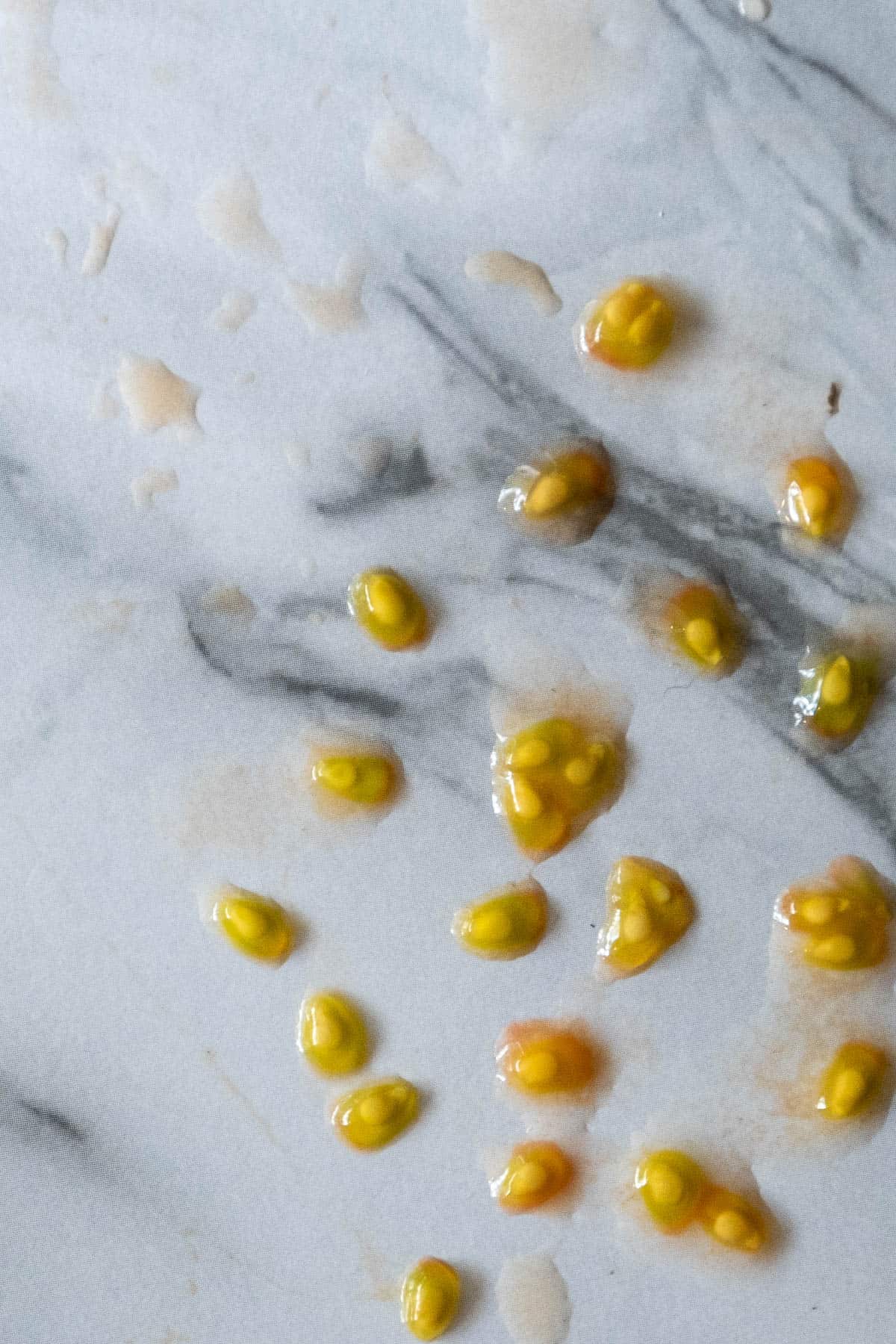
- Cut a very ripe tomato in half across the middle (not from stem to blossom end) and scoop out the seeds into a small bowl. You can also just squeeze the seeds out.
2. The jelly-like guck surrounding tomato seeds needs to be fermented off by soaking them in water.
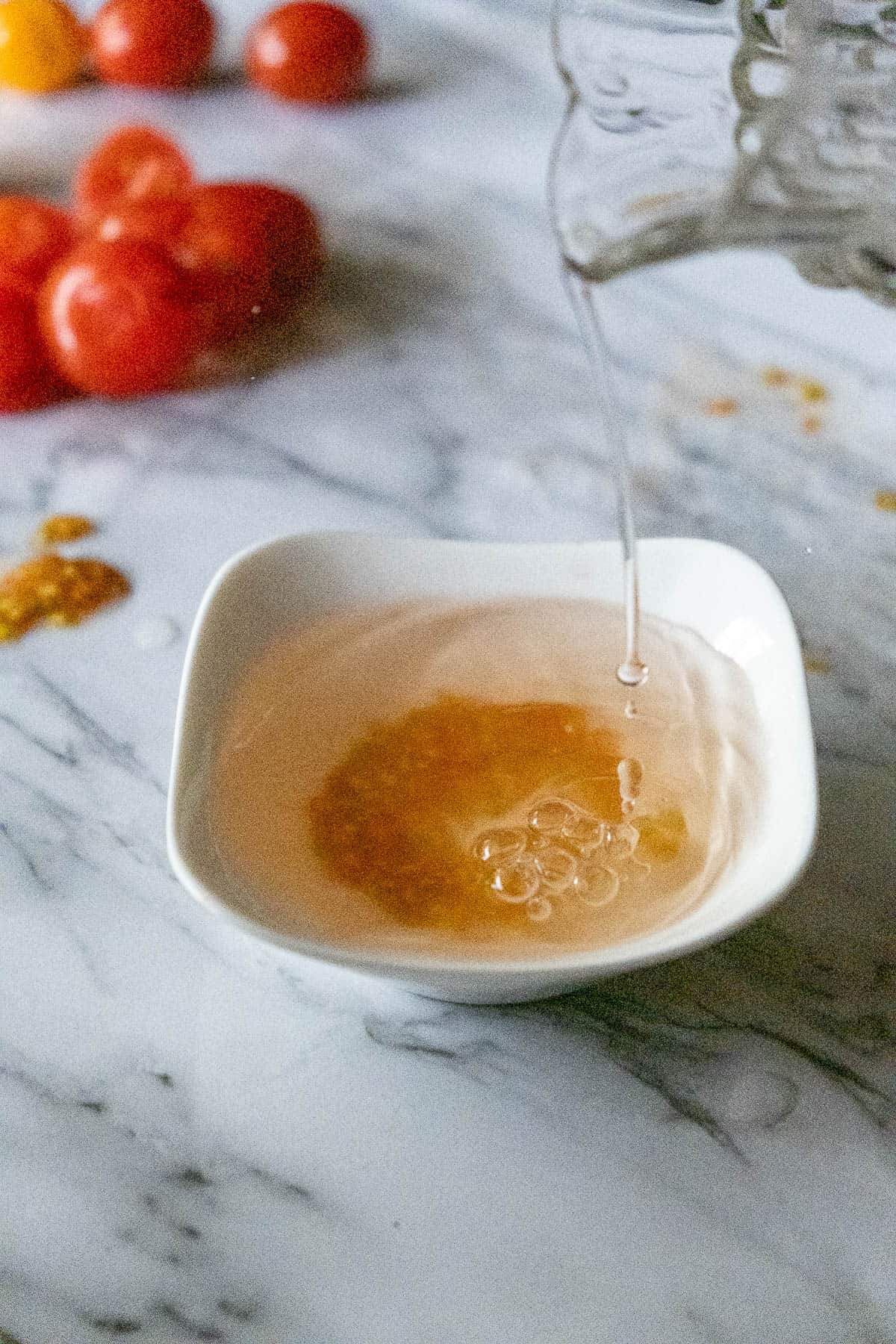
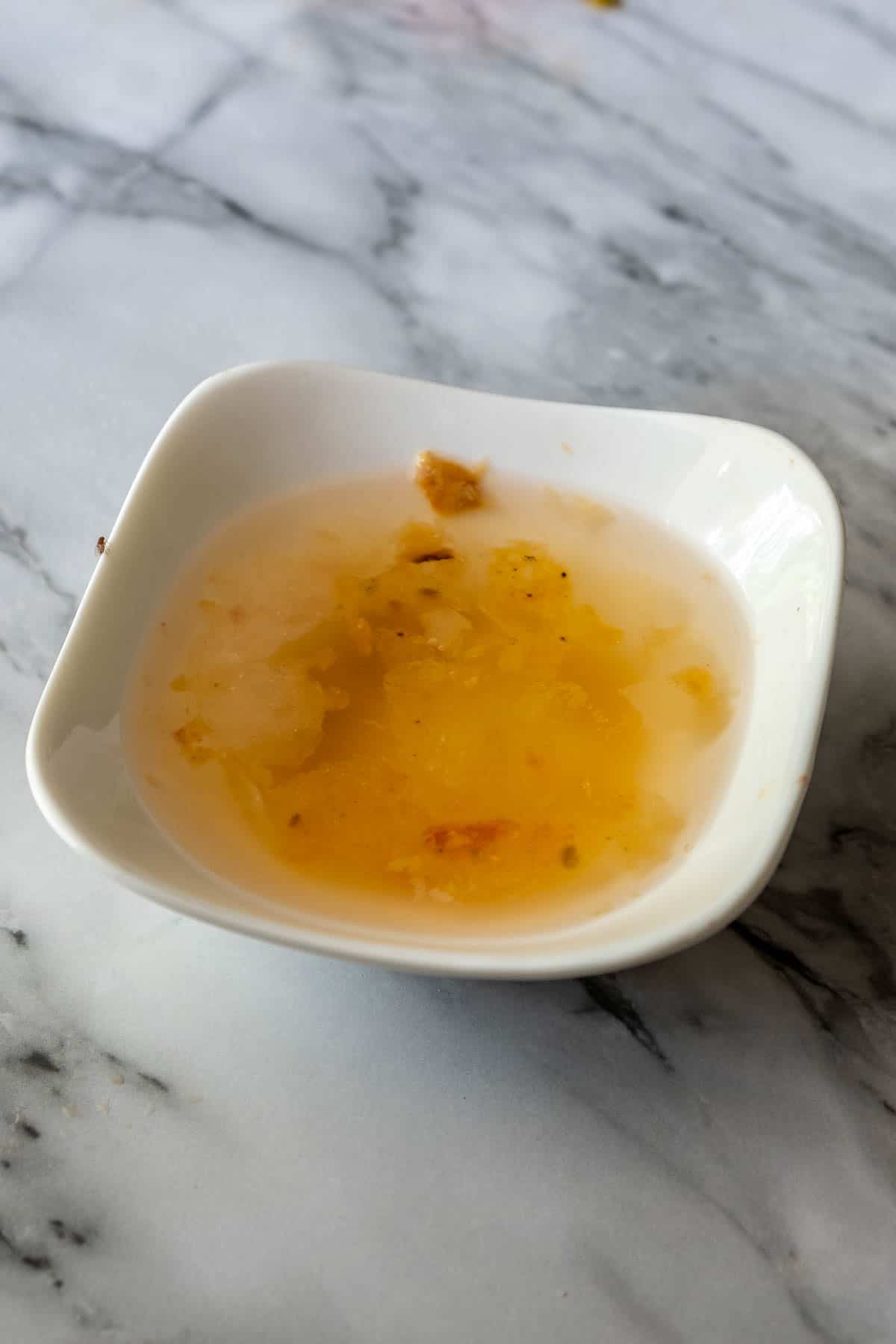
3. Cover seeds with water so they're submerged by an inch or two. Now you wait until a layer of mould appears on the top of the water and it starts to stink.
4. Let the seeds ferment like that on the kitchen counter for a few days. The first time you gag and think to yourself, There's definitely a dead raccoon in this kitchen - THAT'S when your seeds are ready for the next step.
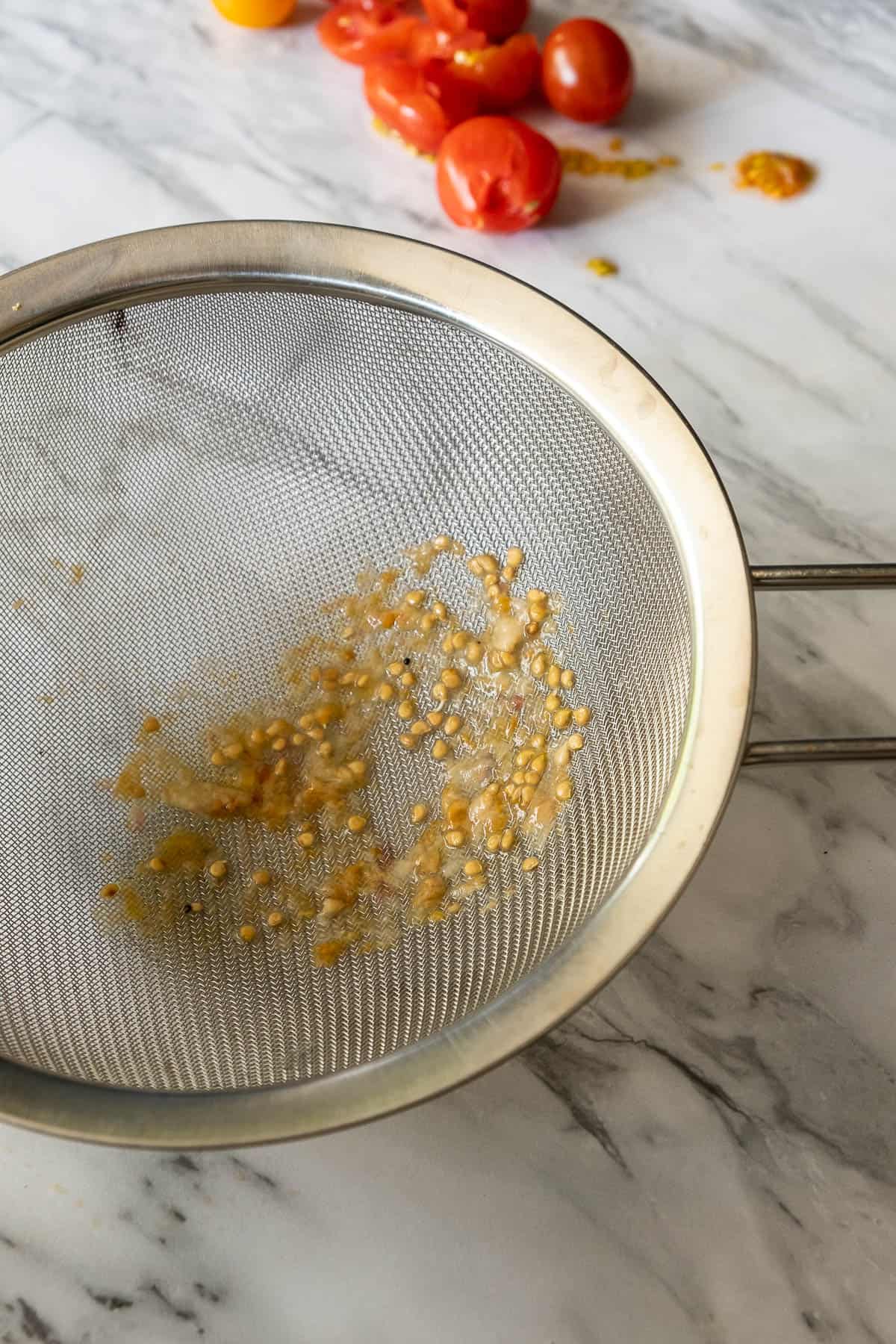

5. Dump the seeds and putrid water into a sieve to drain and rinse.
6. Tap the cleaned seeds out onto a plate or bowl and label what type they are so you don't forget because you will.
☆TIP☆
To avoid any confusion or mix ups I write the variety directly on the bowl or plate with a Sharpie marker. It will just wipe away with a cloth later.
Would you like to save this stuff?
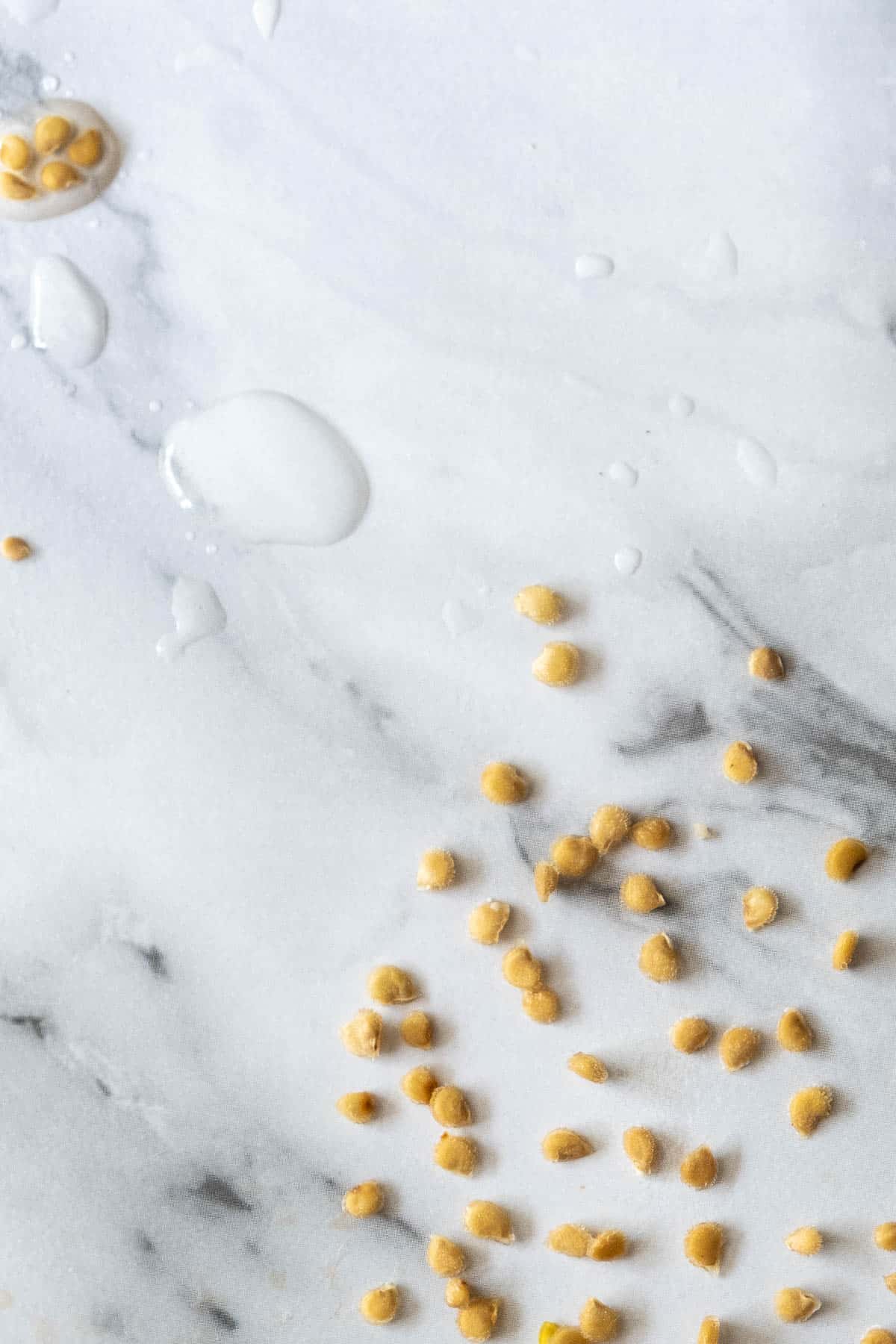
You can see that the pulp surrounding the seeds is completely gone.
Tomato Seeds Not Germinating?
Tomato seeds are pretty smart. They actually have a sprout inhibitor built into them so they don't start to grow while they're in the tomato.
Fermenting kills the sprout inhibitor and allows them to germinate once you plant them. Fermentation also protects the seed & makes it more resistant to disease and bacteria.
If you haven't fermented your tomato seeds before saving them your germination rate will be reduced because they still contain that natural sprout inhibitor.
Paper Towel Viability Test
- Count out about 10 seeds from your envelope.
- Place them on a damp paper towel, fold it over, and slip the towel into a plastic bag.
- Keep it in a warm spot (kitchen counter or on top of the fridge works) and check daily.
- After 5-10 days, count how many sprout.
👉 Your germination percentage = viability estimate. (e.g., 7 sprouts out of 10 seeds = 70% viability.)
Pro Tip: If your saved seeds are under 70% viable, don't toss them-just sow more heavily next spring to make up the difference.
No Tomatoes? No Problem.
Even if you didn't plant any heirloom tomatoes this year that doesn't mean you can't save seeds from them.
Take a trip to your local farmer's market or organic grocery store and buy a few heirloom tomatoes. Whatever looks good to you. Ask the farmer about them. They'll know which ones are the sweetest or saltiest. Take them home and taste them.
Save the seeds of the ones you like best.
HAHAHAHAHAHA. Just kidding. I know you, you'll save them all.
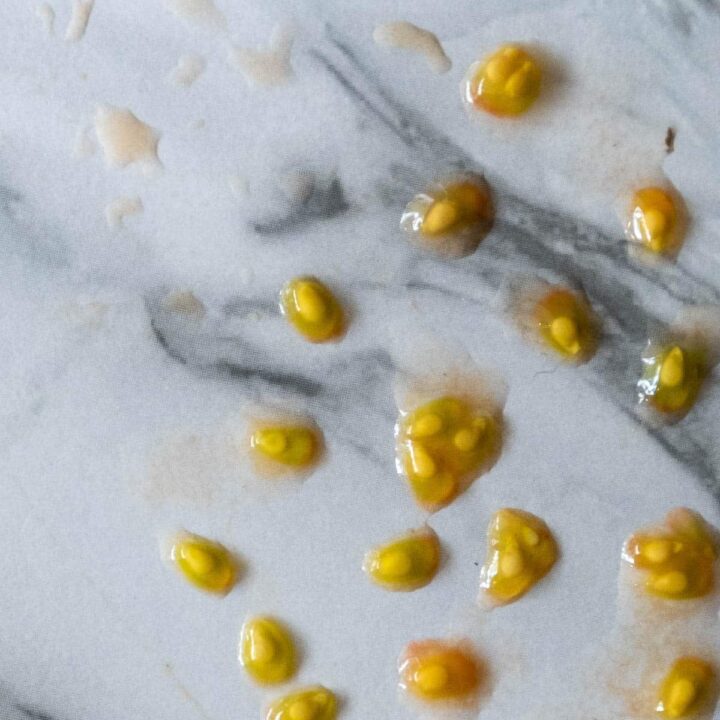
Saving Tomato Seeds
How to save tomato seeds to save money and historic varieties.
Materials
- Ripe heirloom tomato
- Water
- Bowl
- Sieve
Instructions
- Scoop or squeeze seeds out of a very ripe tomato into a bowl.
- Add ½ to 1 cup of water to the bowl and leave the seeds on the counter.
- Check the seeds daily - after 3-4 days of sitting, they will have fermented. When the bowl smells like dead fish breath you'll know you're ready to move onto the next step.
- Strain and rinse the seeds in a sieve.
- Tap the clean seeds out onto a plate or in a bowl and let them dry for a day or two.
- Label and package your seeds.
Notes
Store seeds in a paper envelope.
Avoid storing the seeds in an airtight container like a pill bottle because if the seeds aren't 100% dry they can go mouldy in those conditions.
Resist the urge to dry the seeds on paper towels to speed up the process. They'll stick to the paper towel as they dry and getting them off of there will frustrate the hell out of you.
FAQ
Can I save tomato seeds if no mold forms?
Yes, mold isn't completely necessary. It may not form during fermentation if the area they're fermenting in is cool. You can save them no matter what, even without fermenting. They just won't have as much disease protection and might have a lower germination rate.
Do I need to ferment cherry tomato seeds, or is drying enough?
Just drying them works. Ferment if you want cleaner seeds and better disease reduction.
How long do saved tomato seeds really last in a jaHow long do saved tomato seeds last in storage?
Tomato seeds will easily last 3-5 years. Keep them in a low temperature and low humidity area. I don't store them in the fridge, just in the dark, in my basement.
When to Save Them
The best time to save tomato seeds is at the beginning of the season when you have plenty of tomatoes. Or when you remember.
I usually remember in the fall after I've picked all of my tomatoes and the plants are just a crispy, brown, blight riddled vine clinging to the string I grow them on. So maybe go with the beginning of the season.
If you're reading this at the end of the season and your tomatoes are still green but a frost is closing in, DON'T LET THEM ROT & DIE A HUMILIATING DEATH ON THE VINE! Read my guide on how to save and store green tomatoes so they slowly ripen throughout the fall.
Not just because you're cheap. You're also vindictive. Those squirrels think the last tomatoes are theirs by default. Not this year Mr. Squirrel. Not this year.

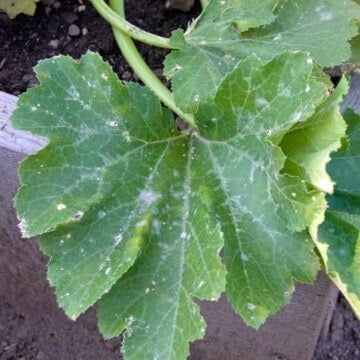


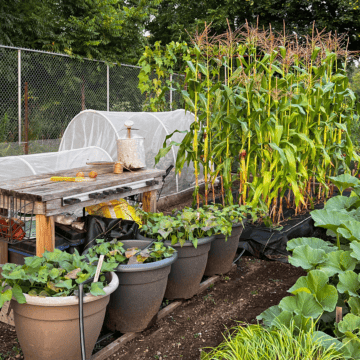
Leanne
This is how I save tomato seeds, too (and my husband HATES the smell of the fermenting seeds!), except I dry my seeds on a coffee filter (which I label), and they come off with no problem. :-)
Thanks, Karen!
Karen
It really is an extraordinary smell.🤢 ~ karen!
Suzy Charto
You might want to add - remember where you put the seeds. A friend gave me cantaloupe seeds from a fruit that mysteriously grew in her front yard. I put them in a safe place and I don't know where. When they put me out to pasture and go through my belongings my children will wonder why she was hiding an envelope of seeds - see she was loosing it.
Karen
I've done the same thing with cash, lol. ~ karen!
erin
THANK YOUUUUUUU! (Hi Karen, loveyouloveyourshow er blog) I have some tomato seeds all dried up and NOT ready to go, apparently, sitting on my microwave. They are still covered in dried tomato guck, and, of course they are stuck to a paper towel. I would have tried pathetically to plant them next year and never would have known why they did not grow. and... probably just given up. Oh darn, now I have to go buy some more heirlooms from the farmer's market. :D
Cheverly
Ironically enough and about the time you were typing this comment, I had the same scenario going on in my kitchen. I tore the paper towel into pieces and and planted the seeds, paper towel bits and all, into my potting mix and EVERY SINGLE ONE sprouted this year. I couldn't believe it. Old seeds, improperly stored, and yet, here we are... too many plants.
Now all that remains is to see whether or not the variety I planted is heirloom or hybrid. Who can remember?! :)
Next time I'll try the dead fish breath method.
Sam
I can't resist mentioning mother nature's good ol' way of removing germination inhibitors... Passing through an intestine :). See, it all comes back to the bear's ass (or someone's ass)... It always does. Hmm. I think a mouldy bowl is probably the cleaner option in retrospect. <3
T.D.
May be a dumb question but would Ziplocs work for sealing up the seeds?
I noticed you said this is similar to many vegetables, but do you know if a simliar method would work for watermellon?
Karen
T.D. - I have no idea on the Ziploc, LOL. I don't see any reason why not. When I buy seeds from places like Tree & Twig or Cubits, their seeds come in tiny ziplock baggies inside paper envelopes. So I'm gonna go with Yes. Ziplocs would be fine. For Watermelon seeds all you have to do is save the watermelon seeds. You don't need to let them ferment. Just remove them, put them in a strainer, clean them well then stir them into a bowl of water. The seeds that float are bad and should be discarded. All other seeds can be laid out to dry for 2 weeks or so, then packaged up. ~ karen!
Bonnie
Just want you to know I almost got thrown of the commuter bus this morning for literally laughing out loud, then coming down with an uncontrollable case of giggles after opening and reading your post.
I'll chance it going forward- Love your blog!
Karen
Thanks Bonnie. I .... don't even remember this post being very funny ... but I'll take your word for it. And the word of your fellow commuters. ~ karen
Bonnie
I think it started at your very first line. :)
Nancy Blue Moon
My Fella and I were just talking about this last night..We love the tomatoes that we planted this year so we were hoping to find out how to save some seeds..Thank you once again my dear friend I will never meet but will always admire..You are truly the Queen Of Canada..Well..at least the DIY Queen of Canada..lol
Julia at Home on 129 Acres
Oh my husband is going to love the bowl of mouldy tomato seeds sitting on the kitchen counter. I however am thrilled that you posted this how-to, Karen. I really want to start growing heirloom veggies, particularly tomatoes, and had no idea how to go about collecting the seeds. Thank you!
Karen
BOOM! ~ karen
Shauna
This is great. We've been wondering about this for awhile now. So excited to have yet another thing to try that you have taught me.
p.s., I finally made yogurt, but because one of your commenters suggested sour cream (and it was all I had on hand), I tried it and it came out great!
Karen
Good to know Shauna! I was hoping someone would confirm that worked. ~ karen
Annie Kip
I just love how you share information I didn't even know I needed!!! I really do appreciate it - you never know when it is going to come in handy. I always wondered about which seeds would be worth saving. Really - thanks!!!
Karen
You're welcome Annie! I figure if I want to know, most of you will want to know. And if you don't ... well ... there's always the inbreeding jokes to keep your attention. ~ karen
Kat
You need to be a little more thorough with your directions in the "labeling" section.
I labelled mine last year, but when I pulled them out this year my labels made no sense.
I have "middle," I have "big," I have "Cinderella," and I have "sweeter."
I have no idea what any of these are. Middle could be size of fruit, middle planting bed, middle bowl of fermenting seeds that I had forgotten to otherwise label?
Don't be me.
cc
I love it and you always start my day with a smile Karen, thank you..
I am gonna try it this weekend, and I like Uncle Bobs way above too Sometimes when we just GET HER DONE it works just FINE..
Karen
cc - Well .. yes you could go with Uncle Bob. Or you could go with Linda Crago, who grows thousands and thousands of tomatoes for a living and sells her seeds via mail order as well. You could go with Uncle Bob. Or you could go with Linda Crago who is a member of every esteemed seed saving society around the world including societies in Canada, England and France. Linda, who is an expert seed saver who travels the world buying rare tomato seeds which she then (using the technique I've shown) propagates and sells or shares the seeds. Or you could go with Uncle Bob. Hah! :) ~ karen
Pati
BWAHAHAHAHAHAHA !!!! You just kill me,Karen !
Barb
Isn't "willy wonker's pecker" a triple redundancy? Ha! Great seed saving info, thanks.
Jake
Yea, Kristina. But remember in those days there was no Ly*ol killing 99% of all germs, no antibiotics for everything from hangnail to spotty covered peckers. Your Uncle Bob didn't know or care that the newsprint could possibly poison him (or care). We live in a sanitized world so we have to be whiter than white, cleaner than clean. Bring back the spotty pecker and grow your own grubs in any apples you find on the ground.:)
Kristina
My Uncle Bob, who was a really tight old farmer, used to just smear the tomato seeds on any old scrap of paper he could find, let the whole thing really dry out, then save the papers in labeled jars. He just tore the seedy paper into pieces and planted the seeds and paper together.
It always seemed to work for him.